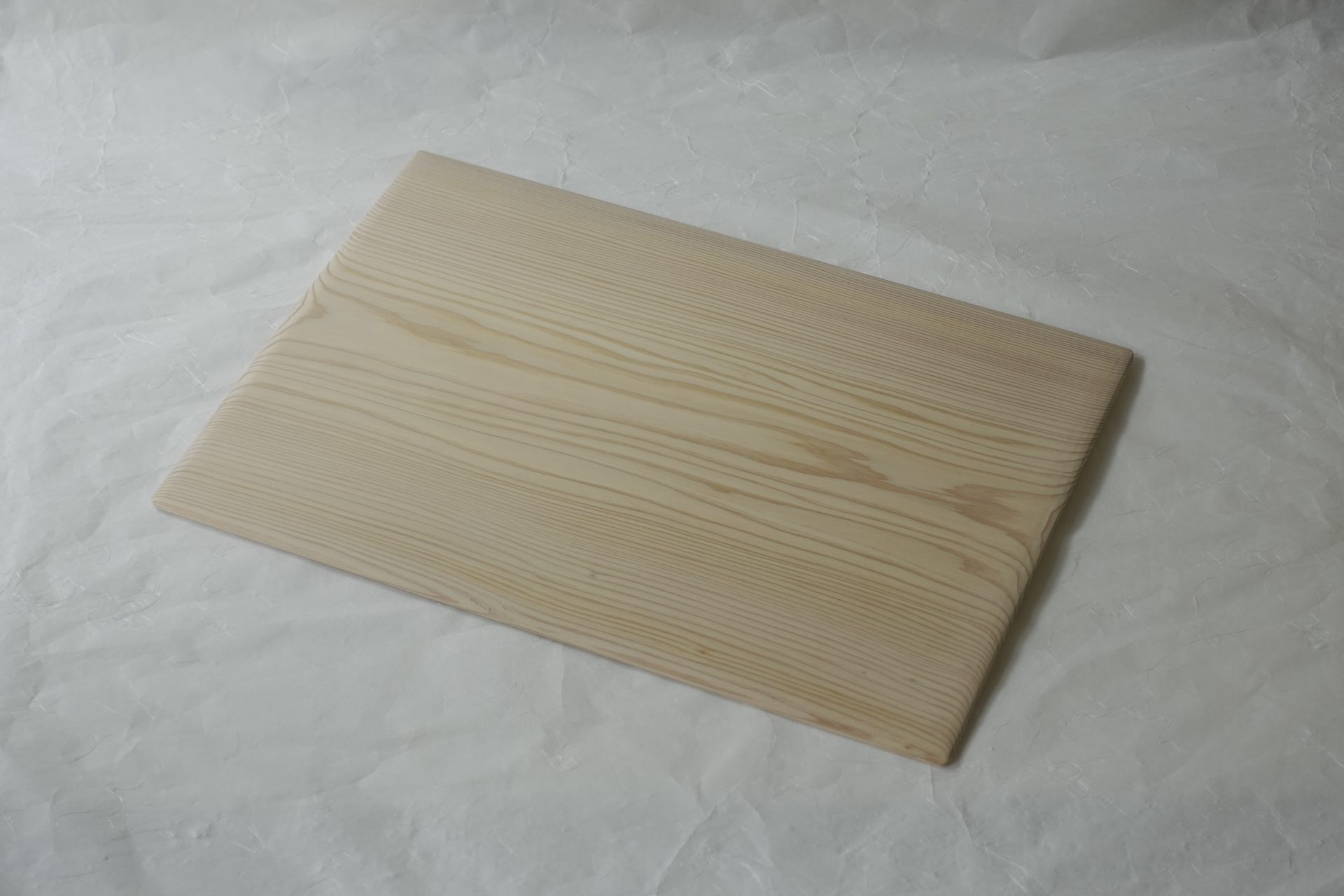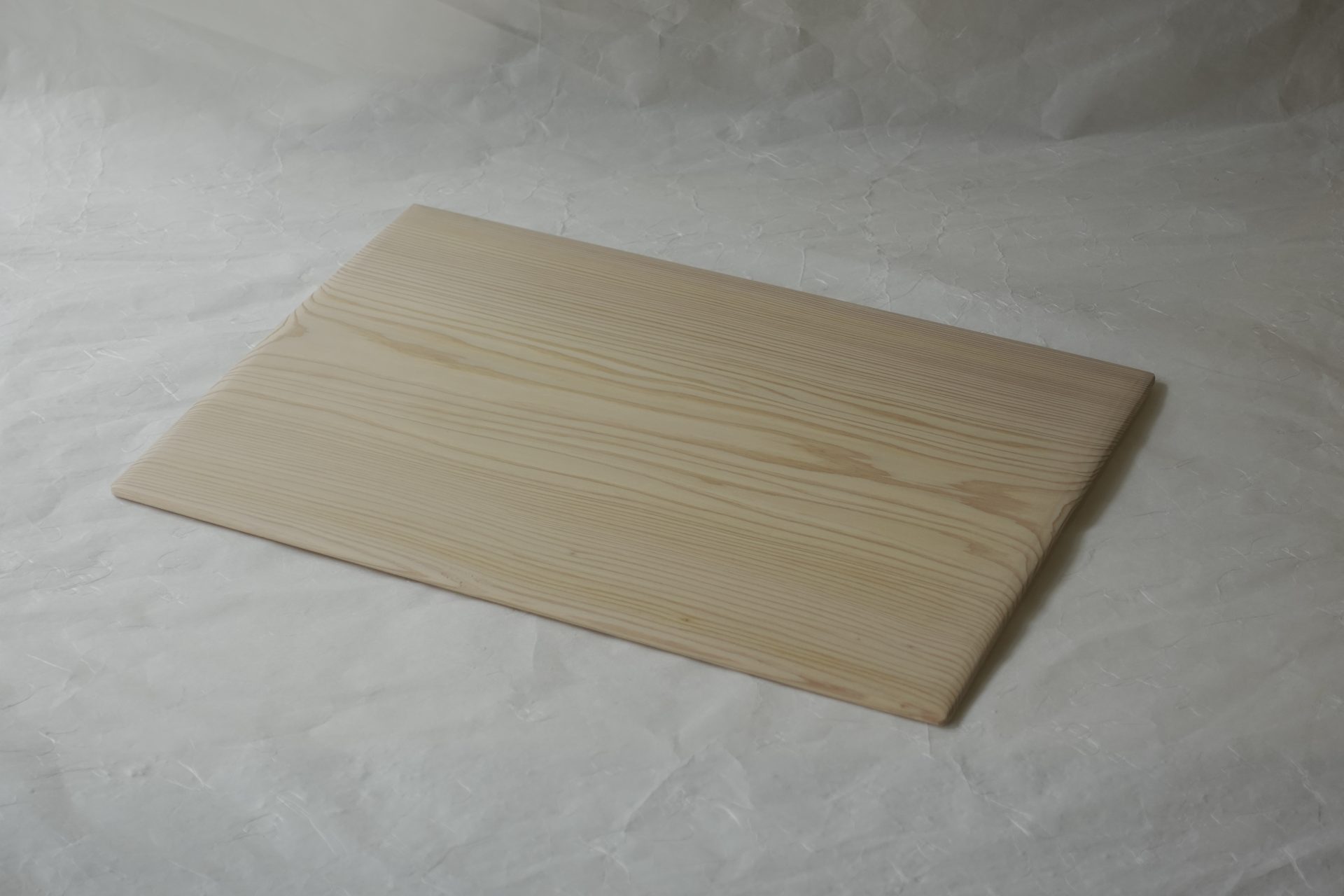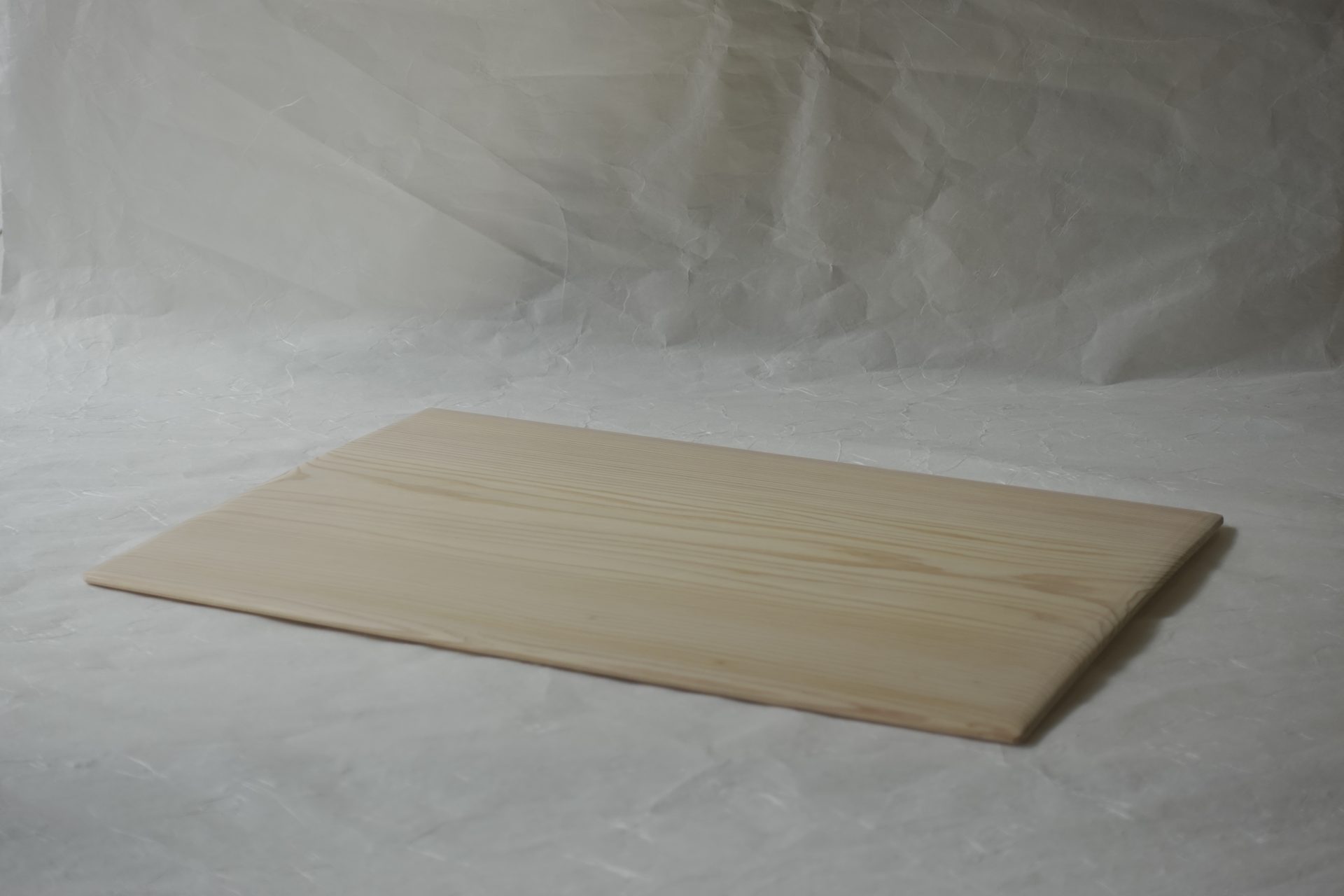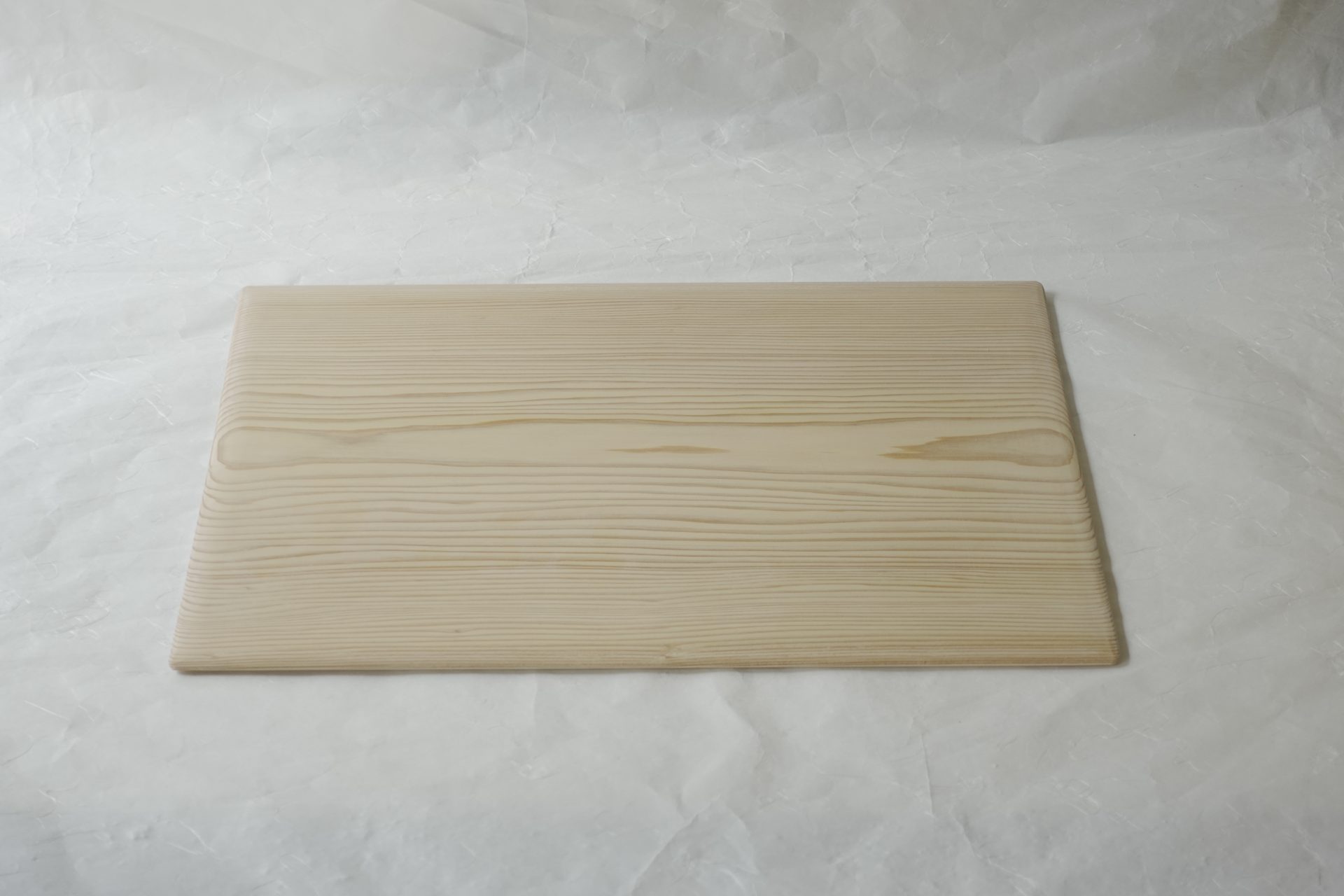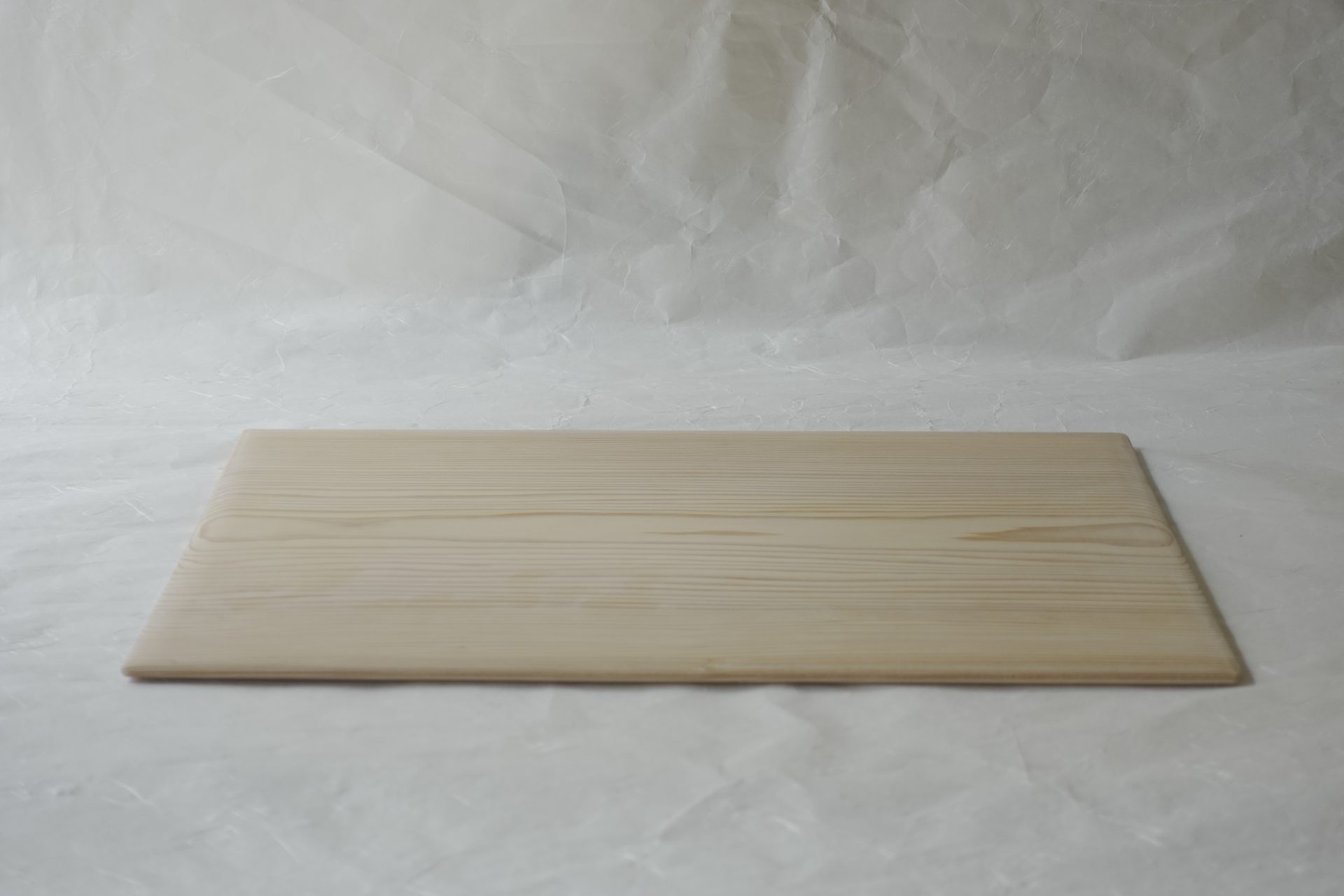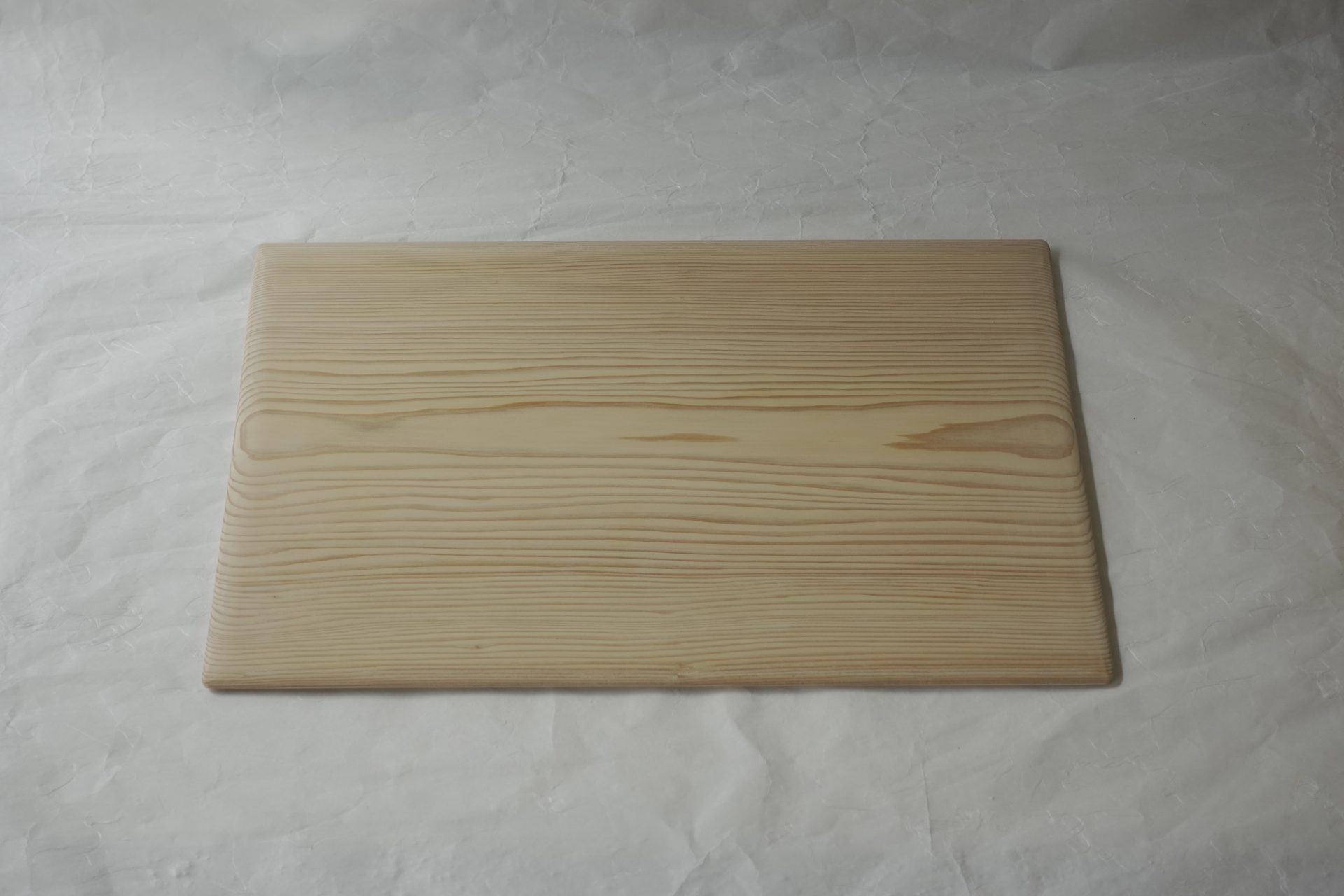41㎝ × 28.5㎝ × 厚さ0.5㎝
木製 杉材
Introduction of Japanese-Made Thin Board (Usuita) with Hamaguri Edges
This is an introduction to a thin board (usuita) with hamaguri edges made from Japanese cedar.
The thin board serves as a base for flower vases, playing a role similar to that of a flower stand when displaying vases in a tokonoma (alcove).
Hamaguri edges refer to the pointed shape finished at the corners of the thin board, resembling the seams of a clam shell.
This thin board falls under the “sō” category of everyday tea ceremonies, part of the three classifications: “shin,” “gyō,” and “sō.” “Shin” refers to formal tea ceremonies for Buddha or dignitaries, while “gyō” is an intermediate category between “shin” and “sō.”
For a better match with this thin board, it is suggested to select a “sō” flower vase, as it will enhance the overall aesthetic. “Sō” flower vases typically include unglazed pottery or natural glazed pottery, such as Iga, Shigaraki, Bizen, and Tanba ware. Additionally, bamboo vases can also be used.
These conventions in the tea ceremony have their reasons, and adhering to these rules will further accentuate the flowers and utensils.
Being made from natural cedar, each piece has a unique wood grain, contributing to its individuality.
Dimensions: 41 cm × 28.5 cm × thickness 0.5 cm
Material: Wood, cedar
薄板角蛤端杉木地(花台)是日本制造的薄板。
薄板是指放置在花瓶下方的薄木板,在床间等地方装饰花瓶时,起到花台的作用。
蛤端是指薄板四边的边缘部分,经过加工呈现出像蛤蜊合口一样尖锐的形状。
该薄板属于“真、行、草”中的“草”类,适合日常茶事。
“真”是指供奉佛菩萨或贵人时的正式茶事,而“行”则是“真”和“草”之间的过渡。
如果搭配“草”的花瓶,会更显得突出。
“草”的花瓶包括无釉陶和自然釉陶,如伊贺烧、信乐烧、备前烧、丹波烧等。
也可以使用竹制花瓶。
茶道中的这些约定有其原因,遵循规则会使花和器具更加突出。
由于是自然杉木,木纹各不相同,这正是其个性所在。
尺寸:41厘米 × 28.5厘米 × 厚度0.5厘米
材质:木制,杉木
